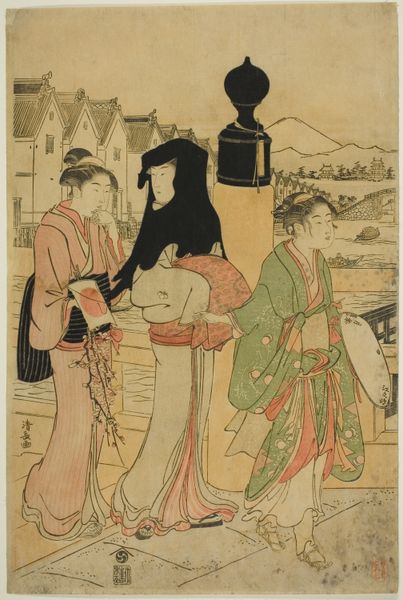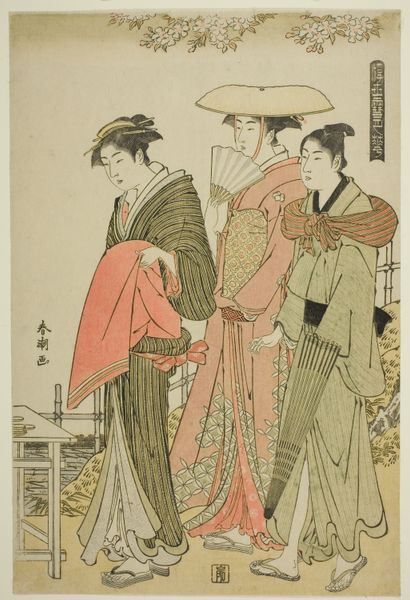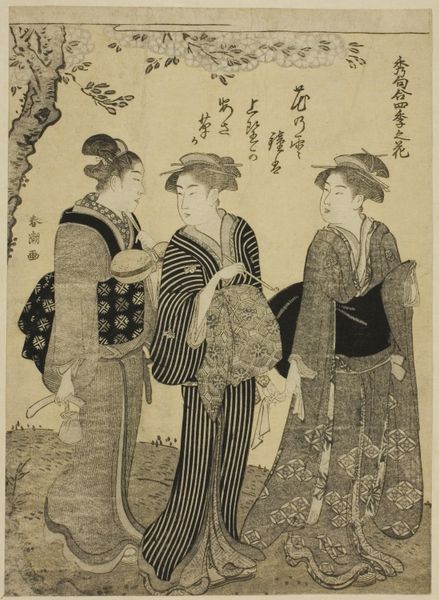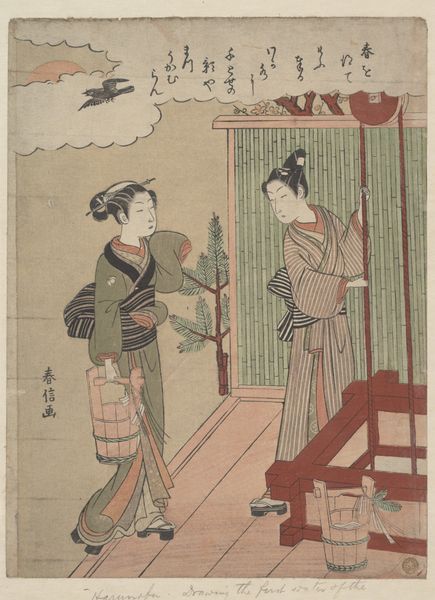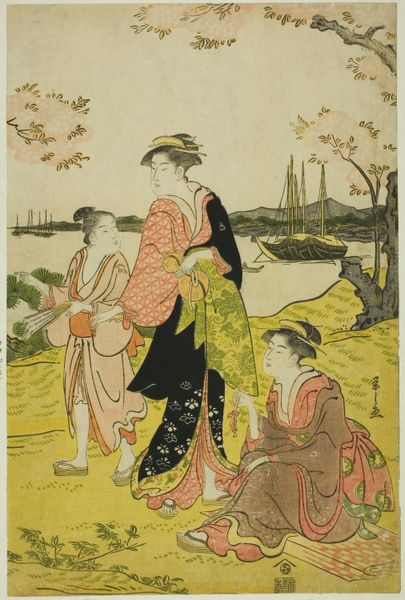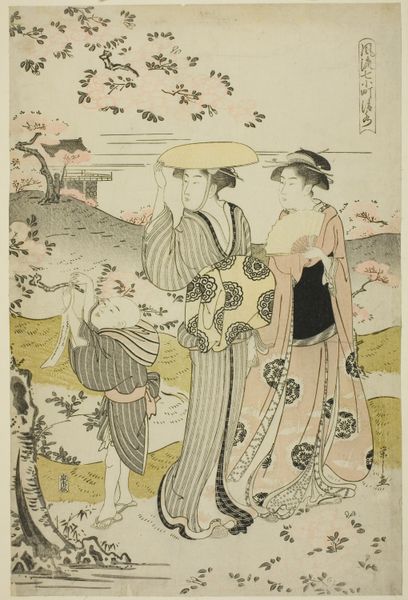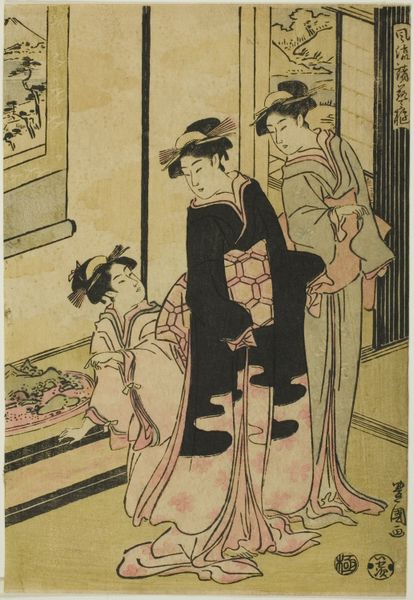
Suma, from the series "A Fashionable Parody of the Tale of Genji (Furyu yatsushi Genji)" c. 1789 - 1794
0:00
0:00
print, woodblock-print
# print
#
caricature
#
asian-art
#
caricature
#
ukiyo-e
#
figuration
#
woodblock-print
#
genre-painting
Dimensions: 15 1/2 × 10 1/4 in.
Copyright: Public Domain
Editor: Here we have Chōbunsai Eishi’s woodblock print, "Suma, from the series 'A Fashionable Parody of the Tale of Genji'," dating to around 1789-1794. There's a whimsical feeling to it, even with the subdued color palette. What draws your attention in this piece? Curator: The fascinating aspect here is how Eishi uses the popularity of "The Tale of Genji," a classic of Japanese literature, to comment on contemporary society through *ukiyo-e*. The series itself, as the title suggests, offers a parody. Editor: So it's like using a familiar story to talk about what's happening in their world? Curator: Precisely. "The Tale of Genji" would have been instantly recognizable. Eishi then uses that familiarity to make subtle commentaries on fashion, social roles, and even the artistic conventions of his own time. Do you notice how the figures are idealized, yet grounded in everyday life? Editor: I see what you mean! It's like they're characters in a play, wearing exaggerated versions of current trends. Curator: Exactly! And that is the point. Eishi isn’t just illustrating a story; he’s offering a satirical reflection of Edo period culture, where the lines between art, literature, and social critique blurred. Who held the power to create these parodies and distribute these prints to a wide audience? How do the prints both cater to and comment on those power dynamics? Editor: That's such a clever way to engage an audience. I never would have thought of this artwork as a social commentary! Curator: That’s the beauty of historical analysis; art always exists within a context. Editor: Definitely something to think about! Thanks for pointing out that rich layer of socio-political significance. Curator: My pleasure; it is always more interesting to scratch beneath the surface and dig into the reasons behind the art.
Comments
No comments
Be the first to comment and join the conversation on the ultimate creative platform.



